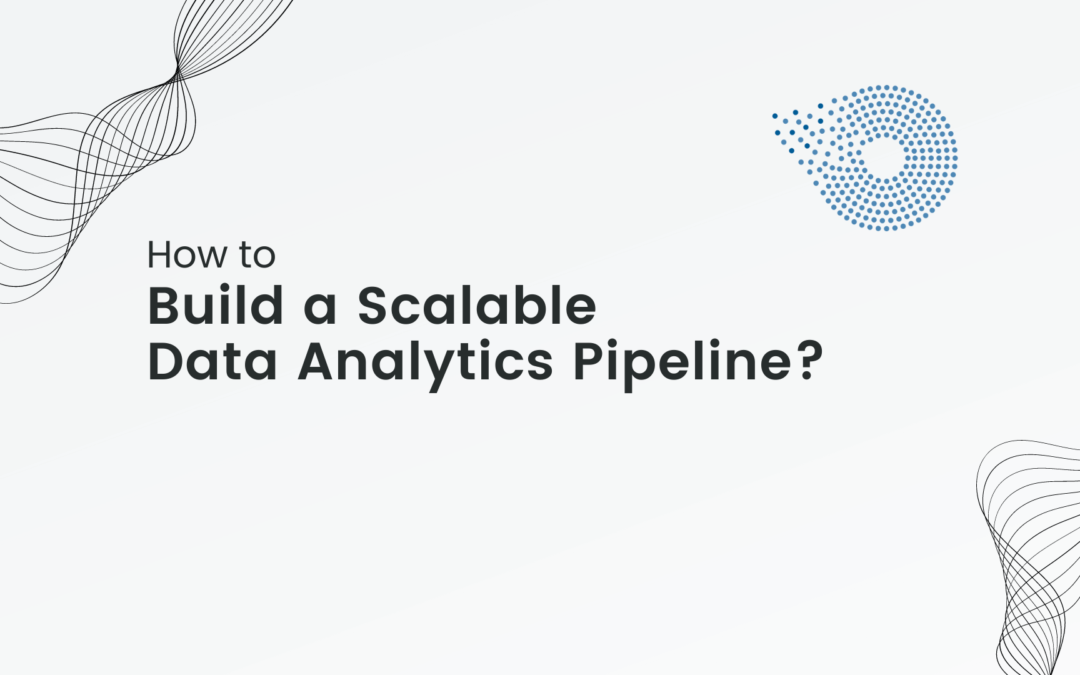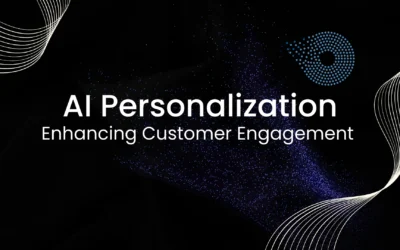[pac_divi_table_of_contents included_headings="on|on|on|off|off|off" minimum_number_of_headings="6" scroll_speed="8500ms" level_markers_1="decimal" level_markers_3="none" title_container_bg_color="#004274" admin_label="Table Of Contents Maker"...

How to Build a Scalable Data Analytics Pipeline
In today’s data-driven world, the ability to harness and analyze data efficiently is paramount. That’s where a scalable data analytics pipeline comes into play. This essential framework empowers organizations to process and analyze data systematically and efficiently. Join us on a journey as we delve into the core concepts, techniques, and best practices behind building and implementing a scalable data analytics pipeline. Unlock the potential of your data, streamline your workflows, and make data-driven decisions with confidence. Welcome to the world of scalable data analytics – a game-changer for data enthusiasts and businesses alike.
There is no denying that data is the most valuable asset for a corporation. But making sense of data, developing insights, and translating them into actions is even more critical.
The average business analyzes only 37-40% of its data. Big data applications can rapidly analyze massive amounts of data, producing representations of current business insights, offering actionable steps in the data pipeline to improve operations, and forecasting future consequences.
What Is A Data Analysis Pipeline?
The data analysis pipeline is a way of collecting raw data from numerous data sources and then transferring it to a data store for evaluation, such as a lake of data or data warehouse.
Before data flows into a data repository, it is often processed. It is especially significant when the dataset’s final destination is a relational database. For building scalable data pipelines, the steps are as follows,
1. Data collection
The first and most important part of the data analysis pipeline is data collection, where you must determine your data source.
- Are they from a different data source or top-level applications?
- Is the data going to be structured or unstructured?
- Do you need to clear up your data?
We may think of big data as a chaotic mass of data, but usually, big data is structured. More strategies will be required to establish a data pipeline on unstructured data.
The architecture of your pipeline may vary depending on whether you acquire data in batch or through a streaming service.
A batch-processing pipeline necessitates a reliable I/O storage system, whereas a streaming-processing pipeline needs a fault-tolerant transmission protocol.
If it comes to structured data, whether it’s text, numbers, or images, they need to go via a process called data serialization before they can be fed into the pipeline.
It is a method of transforming structured data into a form that enables the exchange or storage of the data in a way that allows for the recovery of its original structure.
2. Data storage and management
Assume the data-collecting modules are functioning; where will you store all the data? Many factors influence this, including hardware resources, data management competence, maintenance budget, etc. As this is a long-term investment, you must decide before determining where to invest your money.
The Hadoop File System has long been the top choice within the company’s data infrastructure. It provides a tightly connected ecosystem that includes all tools and platforms for data storage and management.
A viable Hadoop stack can be put up with minimal effort. Its strength rests in its ability to scale horizontally, which means grouping commodity gear side by side to improve performance while minimizing costs.
You may even go above and beyond by optimizing the storage format. Storing files in.txt or.csv format may not be the best option in HDFS. Apache Parquet is a columnar format available to each Hadoop project and should be utilized by every data engineer.
3. Analytics engines
The Hadoop ecosystem and its equivalents are suitable for large data storage systems but not for use as an analytics engine. They are not designed to run quick queries. We run ad hoc queries constantly for analytics purposes.
Thus we need a solution that returns data quickly. Subordinate storage must be constructed on top of an analytics engine.
Vertica is a database management system built for large-scale analytics and rapid query performance. It keeps information in a columnar format and uses projections to spread data across nodes for fast queries.
Because of its track record for offering a robust analytics engine and an efficient querying system, Vertica is frequently employed by many tech organizations.
Vertica can serve as a database for various data-related external applications due to its easy connection with Java, Scala, Python, and C++.
However, there are significant drawbacks to dealing with real-time data or high-latency analytics in Vertica. Its limitations on altering schemas or adjusting projections limit its application to data that requires rapid change.
Druid is a free software analytics database created primarily for Online Analytics Processing (OLAP). Time-series data needs an optimal storage system as well as quick aggregators.
4. Monitoring and Quality
After you have completed data collection, storage, and visualization integration, you may wish to plug and play. But we also need to consider,
- What to do in the event of an incident?
- Where do you turn when your pipeline fails for no apparent reason?
That is the goal of the entire monitoring procedure. It allows you to track, log, and monitor the health and performance of your system. Some technologies even enable live debugging.
That being said, a proper monitoring system is required to establish a long-lasting data pipeline. There are two types of monitoring in this context: IT monitoring and data monitoring.
Data monitoring is just as important as the other components of your big data analytics pipeline. It identifies data issues such as latency, missing data, and inconsistent datasets.
The integrity of data traveling within your system is reflected in the quality of your data analysis pipeline. These measurements ensure that data is transferred from one location to another with minimal or no data loss without influencing business consequences.
We cannot list all of the metrics reported by data monitoring tools since each data pipeline has unique requirements requiring unique tracking.
Focus on latency-sensitive metrics when developing a time-series data pipeline. If your data arrives in bunches, correctly track its transmission processes.
How to Create a Scalable Data Analysis Pipeline
Creating scalable data pipelines, like addressing accessibility issues, requires time and effort, to begin with. Still, when the group grows, it will be worth it. Here are the actions you take to make sure that your data pipelines are scalable:
Select The Correct Architecture
Choose a flexible architecture that meets the data processing requirements of your firm.
A scalable architecture can handle rising volumes of data or processing needs without requiring major adjustments or generating performance concerns.
It can include implementing distributed networks that allow for horizontal growth by adding nodes as needed or cloud-based solutions that offer scalable infrastructure on demand.
The architecture should also be responsive to modifications in sources of data or processing requirements over time.
1. Implement Data Management
Create a data management strategy according to your organization’s specific objectives and goals, the data kinds and sources you’ll be dealing with, and the different kinds of analysis or processing you’ll perform on that data.
For example, a typical data warehousing solution may be appropriate if you have a large volume of structured data that must be processed for business intelligence purposes.
On the other hand, a data lake strategy may be more appropriate when dealing with unstructured data, such as social media feeds or sensor data.
A data lake enables you to store vast amounts of data in their native format, making it easier to handle and interpret data of diverse quality and type.
2. Use Of Parallel Processing
Employ parallel processing techniques to boost the processing capacity of your data pipeline. It breaks a task into several smaller tasks that can be completed simultaneously.
Suppose a data pipeline is created to process a significant amount of data. Then you may need to divide the data into smaller portions so that different computers may handle it in parallel.
3. Optimize Data Processing
Limiting data transport, employing caching and in-memory processing, compressing data, and conducting incremental updates rather than re-computing past data are all ways to optimize data processing.
A scalable pipeline will process enormous amounts of data in real-time while also adjusting to future needs and demands.
As a result, the data team’s efficiency, adaptability, and ability to empower business users to make informed data-driven decisions would improve.
Common Data Analysis Pipeline Use Cases
Data pipelines are now common in practically every sector and corporation. It could be as simple as moving data from one area to another or as complex as processing data for machine learning engines to make product suggestions.
The following are some of the most typical data pipeline use cases:
1. Utilizing Exploratory Data
Data scientists utilize exploratory data analysis (EDA) to study and investigate data sets and describe their essential properties, frequently using data visualization approaches.
It assists in determining how to modify data sources best to obtain the answers required, making it easier for data scientists to uncover patterns, detect anomalies, test hypotheses, and validate assumptions.
2. Data Visualizations
Data visualizations use standard images to represent data, such as graphs, plots, diagrams, and animations.
3. Machine Learning
Machine learning is a subfield of artificial intelligence (AI) and computer science that employs data and algorithms to replicate how humans acquire knowledge and gradually enhance its accuracy.
Algorithms are trained to generate classifications or predictions using statistical approaches, revealing crucial insights in data mining initiatives.
To read more here about machine learning benefits and its workflows
How to Create an Accessible Data Science Pipeline
Although the work required to create a usable data science pipeline may appear intimidating initially, it is critical to appreciate the considerable long-term advantages they may have.
A well-designed and easily available data pipeline helps data teams to acquire, process, and analyze data more rapidly and consistently, improving their medium- to long-term workflow and allowing informed decision-making.
The following are the steps in a data pipeline to creating an accessible data pipeline:
1. Define your data requirements.
Determine how data will move through the pipeline by identifying the information about your company’s sources, types, and processing requirements.
It ensures that data is maintained and routed logically and consistently.
2. Implement standardization
Establish name conventions, formatting, and storage standards for your data. It makes it easier for teams to identify and access data and decreases the possibility of errors or misunderstandings caused by discrepancies. Standardization can also make integrating more data sources into the pipeline easier.
3. Select the correct technology.
Select a unified data stack with an intuitive user interface and access control features.
- Ensure that your team members can use your data tool regardless of data literacy level.
- You can no longer rely on costly data engineers to build your data architecture.
- Ensure that only the users who require the data have access to it.
Automate processes
Automating manual procedures in a data science pipeline can lead to more efficient and reliable data processing.
For example, automating data intake, cleansing, and transformation operations can limit the possibility of human error while also saving time.
Data validation, testing, and deployment are other procedures that can be automated to ensure the quality and dependability of the data pipeline.
Process automation can also save data teams time to focus on more complicated duties, such as data analysis and modeling, resulting in enhanced insights and decision-making.
Wrapping Up
Despite using many tools to allow distinct local activities, a Data Analytical Pipeline strategy assists businesses in managing data end-to-end and providing all stakeholders with rapid, actionable business insights.
Recent Post
Top Benefits of Data Governance for Your Organization
Enhancing Customer Engagement with Data Management Platforms and Omni-Channel Strategies
[pac_divi_table_of_contents included_headings="on|on|on|off|off|off" minimum_number_of_headings="6" scroll_speed="8500ms" level_markers_1="decimal" level_markers_3="none" title_container_bg_color="#004274" admin_label="Table Of Contents Maker"...
AI Personalization Excellence: Enhancing Customer Engagement in 2024
[pac_divi_table_of_contents included_headings="off|on|on|off|off|off" scroll_speed="8500ms" level_markers_3="none" title_container_bg_color="#004274" _builder_version="4.22.2" _module_preset="default" vertical_offset_tablet="0" horizontal_offset_tablet="0"...




